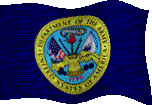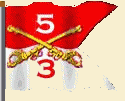Charlie Horse History Forward
Preface
This contribution is dedicated to all those Troopers who served in “Charlie Horse” C/3/17 Cav, later redesignated as D/3/5 Cav, leading up to, during and after the Operation LS 719. Accounts of their bravery and dedication may not be found in official documents and awards citations but they are forever in the memories of those of us that were there. I am Tom Ford. This is my account of what transpired from Aug 1970 through 1971 and up until stand down in Feb 1972. I arrived in Quang Tri and reported for duty to the Commanding Officer mid-Oct 1970 and served twelve months with the bravest men I’ve ever met. Eighteen months of unending combat is the Troop’s legacy.
The Cavalry Mission has remained the same since Alexander the Great led the charge with his fabled “Companions” at Chaeronea in 338 BC, defeating the Athenians. Mobility and shock force have been the hallmark of Cavalry. Enemy contacts made with the advance of Cavalry Troops are quickly augmented with additional assets. Exploiting the rapid ability of Air-Mobile (Air-CAV) against the enemy was the first step on the road to victory in most cases. The finest example of modern Cavalry was undoubtedly the 1st Air Cav Division’s relief of Marines at the Siege of Khe Sanh in Operation Pegasus. Screening the advance and employed as a Division, the exploitation of the speed, power and attack tactics were unsurpassed.
The other side of the coin, screening the withdrawal, is a different creature. The last example of a screened withdrawal before Vietnam was Korea and the retreat down the peninsula to Pusan. The withdrawal of US Forces from the Republic of Vietnam (RVN), and the reliance on the Army of the Republic of Vietnam (ARVN) to carry the combat role was demonstrated to be a failure during the Lam Son 719 incursion into Laos. Screening the withdrawal holds the advancing enemy at a distance from the retrograding forces to insure an orderly retreat. Cavalry has adequate firepower and mobility to slow the opposing forces, but the drawback is that those Troops can not expect reinforcement in strength during the inevitable emergencies. Sacrificing the few to protect the many and denying a major engagement while in retreat is a thankless task. Many times, the valor of this mission is shadowed by the realization of the untenable situation, but the losses are just as dynamic. That was Charlie Horse’s assigned task throughout the last half of 1971 and up till their stand down in Feb 1972. Charlie Horse was the last gunfighter out of the saloon, shooting their way south once the departure of the southern American units was complete after the Laotian disaster was called finished.
This narrative follows the Charlie Horse Troop, detached and unsupported, from Aug 1970 operating as C/3/17 Cav, redesignated D/3/5 Cav in Feb 1971, until the Troop ‘stood down’ in Feb 1972. Exiting south from Quang Tri to Camp Evans to Camp Eagle and then to Danang, the Troop was the last effective fighting force in Northern I Corps. [NOTE: In 1972 and 1973 other units operating out bases in Danang covered this area]. The recipe for the ‘Easter Offensive’ was mixed and ready, just waiting for the next fighting season.
In the passing of over forty years since LS 719, the dates herein may not be perfectly logged but the memory of those actions are as clear as the day they occurred. As the Platoon Commander of the Aerial Rifle Platoon (ARP) for seven months and as Operations Officer for my last five months, I was honored and proud to have served with the men in this Troop. The time worn phrase, “I served with heroes,” needs to be dusted off, polished and printed in very large font.
Charlie Horse Moves North
In Aug 1970, the Troop, commanded by MAJ James D. Danielson, was detached from the 3/17th Cavalry, for what was rumored to be a 90-day deployment from Di An in III Corps to I Corps. The Troop was attached to the 1st Bde, 5th Inf Div (Mech) (1/5 Mech or 1/5th) commanded by BG John G. Hill Jr. One of the few officers in the Troop with any experience in I Corps was CPT Larry G. Brown who had flown that Area of Operations (AO) when he was assigned to the 1st Cavalry Division. Larry briefed the Troop Aviators and Crew Members as to what they could expect on the trip and in the newly assigned AO and led the Troop north. The Troop was quick to miss the comforts of Di An. When Charlie Horse arrived at Quang Tri Combat Base, the assigned quarters were some deserted Marine Quonset huts along the river. The huts were patched with plywood and tape to provide shelter but not much comfort. A simple corrugated roofed building with slat sides and screened ventilation became the Officer's Club, the "Watering Hole." It was the first building as you departed the revetment area, the "Hitching Post" and not far from the billets down the muddy road.
Personal Recollections of CPT Larry G. Brown:
My first tour in Vietnam as a Scout was with B/1/9 Cav 1st Cav Division in 1967-68. I joined Charlie Horse in Mar 1970 to start my second tour. Let me provide some background details about our tactical and our pocket patches. We were flying OH-58As as Scout aircraft. While some 3/17th Cav Troops flew with mini-guns in their OH-58s, Charlie Horse did not. We flew “1 on 1” (one Scout and one Cobra gunship). We called this configuration a “Pink Team” on my first tour; but now they were “Hunter Killer Teams.” We often flew two or three Teams in the OA at the same time. We only used a Command and Control (C&C) Huey when we had specific missions that needed very timely situation reports (sitreps) from the Recon elements to the higher command. Our ARP (which was our quick reaction force) would “stage” at the nearest airfield or Special Forces camp to the AO we would recon that day. Very quickly after we moved up north, we started flying the “Heavy Team” (1 Scout with 2 Cobras) configuration. Initially we used this configuration to get new pilots ‘up to speed’ in the OA and to learn the Air Cavalry business. The view from the front seat of a Cobra is impressive! But, you can also hold a map in your lap, make notes while listening to the radios, and ask questions of the guy in back who is doing most of the flying. Remember Job #1 for the Cobra was covering the Scout. We soon learned that the second Cobra would ‘cover’ the other Cobra ~ meaning while one Cobra would be focused on who was shooting at the Scout (or who the Scout found that needed to be killed); the second Cobra would be focused on who was shooting at the gunships. We also added a “chase” Huey with a squad of Infantry (Blues is the traditional Air Cavalry word for the ARP Infantry) for an almost instant rescue or ground recon capability . Sometimes we would fly two Hunter – Killer teams simultaneously in the OA but once things got “real exciting” we went to just one at a time in the OA. For example, one Scout draws fire and the situation looks like it might develop into a battle. All other Teams in the OA would break off and come to the ‘battle.’ If the ‘battle’ needed more Scouting or more fire power, it was there. However, everyone could get low on fuel or ammo about the same time; so, you had to have your wits about you if the Troop needed continuous coverage over a specific point. As best I recall, we only had one or two “20 ships” (the AH-1G armed with a 20-mm gun) in the whole Troop when we were flying in III Corps and for the first few months in I Corps. I’ve heard details that BG Hill used his influence to get Charlie Horse lots more 20-ships but that was well after my time. Concerning pocket patches, while I saw guys wearing the ASSASSINS, BAGGER, and KAMAKAZI patches; it is my opinion that “the patch of choice” was the one with the “triangle pointing down.” It was “the Troop” patch especially after we moved north. Everyone customized it with their Charlie Horse radio call sign (the number) and then the locations we’d flown in: III Corps and Cambodia, then I Corps and finally Laos. I left Charlie Horse in late Dec 1970 to join the 1/9th Cav again in III Corps just after Carol and I got married. Reference Appendix II for details about the pocket and shoulder patches.

.gif)


